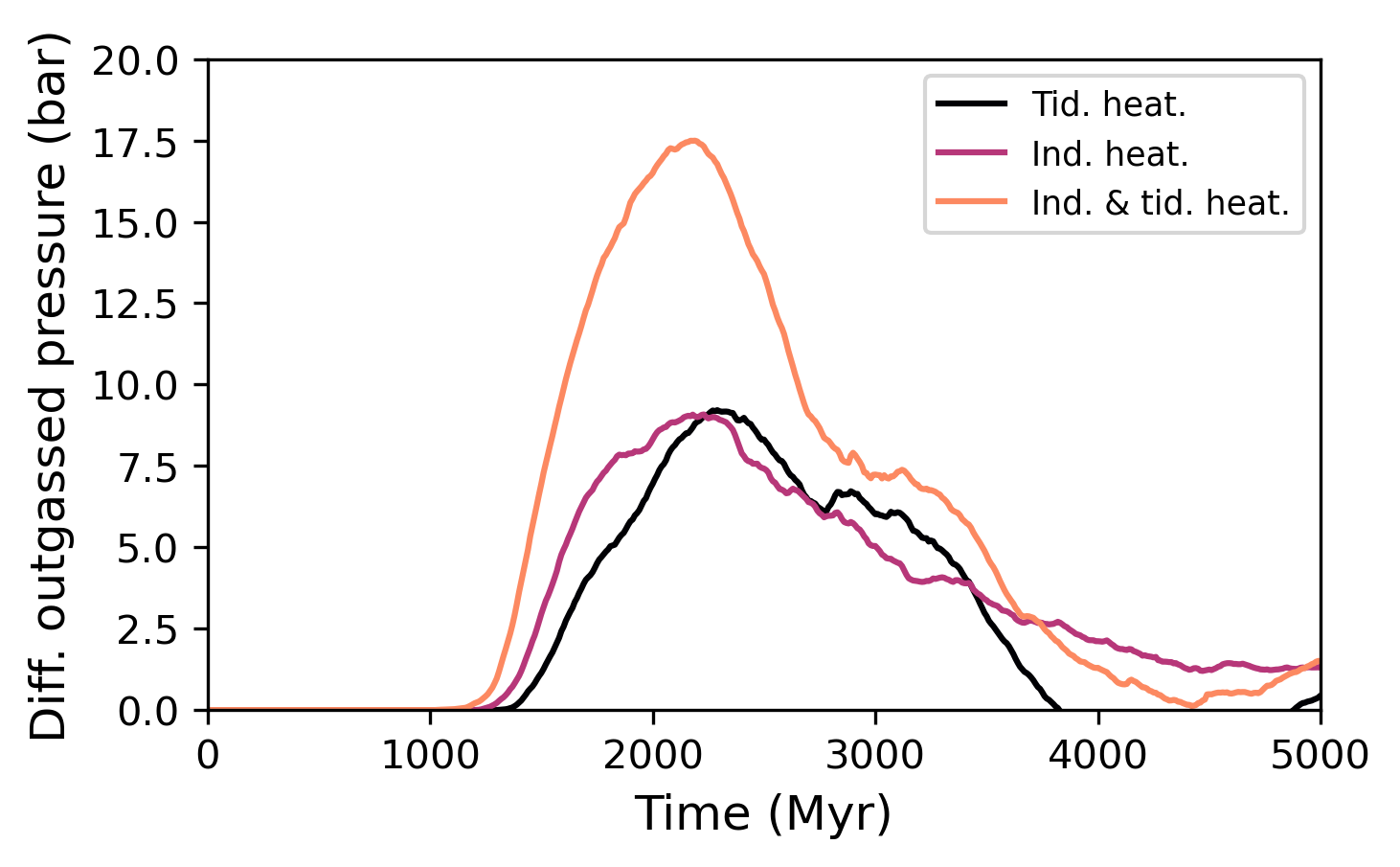Department of Earth Sciences
Service Navigation
SPP 1992: Exploring the diversity of extrasolar planets
One of the most exciting recent discoveries in astronomy is the existence of a huge variety of extrasolar planets orbiting other stars, including numerous multi-planet systems. Exoplanets can be very different to those found in our Solar System, and range from the so-called "Hot Jupiter" and "mini-Neptune" gas planets to large rocky planets ("super-"Earths). This Priority Program (SPP) aims to explore such diversity and understand its origins. The SPP will make substantial contributions to answering the following fundamental questions: What does the diversity of exoplanets tell us about their formation processes and the evolution of planets and planetary systems? What can we learn about the astrophysical conditions necessary to harbour life and are these conditions common in our Milky Way? To understand the diversity and complexity of exoplanets requires combined efforts across disciplines, linking observational planet detection and characterization to theory. The German research community already has the key elements necessary for such a concerted effort. The major observational basis in the timeframe of this SPP will be formed by upcoming international projects for which German scientists have leading roles, such as, e.g., CARMENES, NGTS, GAIA, CHEOPS and instruments at major ground based observatories.
In addition, public data will be available, e.g. from the US-led K2 and TESS missions, and the James-Webb-Telescope (JWST) will be launched. The theoretical research activities on exoplanets in Germany cover the critical fields relevant for their characterization, from planetary interiors, and atmospheres to planet formation. It is timely to join forces across the various sub-disciplines in order to address the above key questions, to remain competitive internationally, and to harvest the scientific returns resulting from the large financial investments made into the observational projects mentioned above. Science areas addressed in this SPP therefore include: the detection of exoplanets and observational characterization of their properties (e.g. orbit, mass, radius, atmosphere); and the understanding of exoplanet properties and diversity in terms of atmospheres, planetary interiors, habitability, formation and evolution processes. During the two funding periods of 3 years each (2017-2022) this SPP will focus the German exoplanet science community to explore the new data by driving scientific data exploitation, triggering dedicated follow-up observations for further characterization, and by developing the related theory needed to answer the above mentioned scientific questions. These activities will prepare the German community for the further afield projects which will become available in the next decade (e.g. E-ELT, PLATO 2.0) and thus maintain the strong impact of German scientists in this rapidly developing area. The focus of this SPP lies on science clearly related to the analysis and interpretation of already available.
EXO-HEAT – Interior Heating of Exoplanets
Information on exoplanets is still sparse to date, but the data set is expanding fast due to the combined efforts of various telescopes. The next years will see a tremendous amount of new exoplanet detections and follow-up measurements to constrain planet properties and stellar data. Therefore, new techniques are needed now to help constrain the best planet candidates for expensive follow-up observations. The atmosphere composition and structure depends on several different factors, such as chemical pathways in the atmosphere, reactions with the surface (e.g. carbonate formation), weathering effects, erosion to space and last, but definitely not least, replenishing of gases from the interior of the planet. One of the main factors that influences the amount of outgassing (and regassing) of volatiles (and hence greenhouse gases) is the energy available in the interior. Since previous studies have already shown the effect that strong internal heating can have on factors such as plate tectonics (and hence recycling of volatiles into the interior), volcanic activity, and outgassing, here we rather address the fundamental question of how much heat can be expected in an exoplanet depending on its composition,
interior thermal evolution (including loss of heat due to volcanic activity and plate tectonics cooling) and the available observational constraints that can be used to characterize a rocky planet’s thermal state. These observational constraints include the age of the system, the planetary mass and radius, the distance from the star and equilibrium surface temperature, the abundances of both major planet-building elements (Mg, Fe, Si) and radiogenic heat sources, but also external heat sources such as the magnetic field strength and orientation of the star (possibly leading to magnetic induction heating) and orbital configurations and related tidal dissipation. In the past, studies typically either concentrated on single observational constraints (such as the surface temperature or the amount of tidal dissipation), or used general parameter studies to investigate the effect of single parameters (e.g. amount of radiogenic heat sources). Here, instead, we will combine all above mentioned observable constraints (as available for each individual planet) to investigate how different heat sources interact with each other (e.g. amplify their effect or reduce each other). This study is necessary to be able to better predict the range of interior evolution pathways. In the end, it is the heating in the interior that strongly influences the long-term evolution of the atmosphere and magnetic field and therefore the potential habitability of an exoplanet.

© Noack
Interior heating and outgassing of Proxima Centauri b: Identifying critical parameters
Since the discovery of a potentially low-mass exoplanet around our nearest neighbour star Proxima Centauri, several works have investigated the likelihood of a shielding atmosphere and therefore the potential surface habitability of Proxima Cen b. However, outgassing processes are influenced by several different (unknown) factors such as the actual planet mass, mantle and core composition, and different heating mechanisms in the interior.
We aim to identify the critical parameters that influence the mantle and surface evolution of the planet over time, as well as to potentially constrain the time-dependent input of volatiles from mantle into the atmosphere.
To study the coupled star–planet evolution, we analysed the heating produced in the interior of Proxima Cen b due to induction heating, which strongly varies with both depth and latitude. We calculated different rotation evolutionary tracks for Proxima Centauri and investigated the change in its rotation period and magnetic field strength. Unlike the Sun, Proxima Centauri possesses a very strong magnetic field of at least a few hundred Gauss, which was likely even stronger in the past. We applied an interior structure model for varying planet masses (derived from the unknown inclination of observation of the Proxima Centauri system) and iron weight fractions, that is, different core sizes, in the range of observed Fe-Mg variations in the stellar spectrum. We used a mantle convection model to study the thermal evolution and outgassing efficiency of Proxima Cen b. For unknown planetary parameters such as initial conditions, we chose randomly selected values. We took heating in the interior due to variable radioactive heat sources and induction heating into account and compared the heating efficiency to tidal heating.
Our results show that induction heating may have been significant in the past, leading to local temperature increases of several hundreds of Kelvin. This early heating leads to an earlier depletion of the interior and volatile outgassing compared to if the planet had not been subject to induction heating. We show that induction heating has an impact comparable to tidal heating when assuming latest estimates on its eccentricity. Furthermore, we find that the planet mass (linked to the planetary orbital inclination) has a first-order influence on the efficiency of outgassing from the interior.
Participants in project SPP 1992
Key Data
- Project number: 313698196 / 446156850
- Project term: Jan 01, 2021 - Aug 31, 2024 (2nd funding period)
- International connection: Austria, China, Israel, Japan, Netherlands, Sweden, Switzerland, Spain, USA

